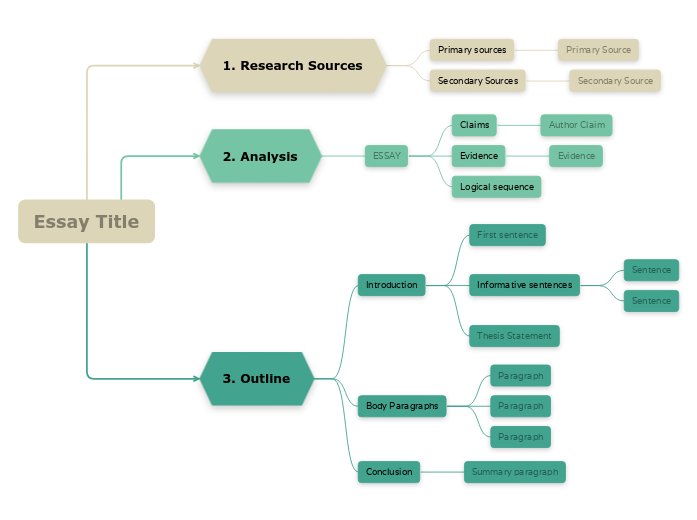Essay Template
Learn the basic steps in building an essay. Click on the arrow below to start developing the structure of your essay.
Keywords: literature, writing


Więcej takich
writing an essay about a book can be difficult if you do not keep your ideas in order. Use this template to learn the steps to write an essay.
Type in the essay topic, then start writing the research sources. These are grouped into primary and secondary sources. Type in the name of the author and the name of the book you are going to analyze.
Create an outline for the essay with an introduction, body paragraphs, and conclusion.
What's your essay about?
Type in the title of your essay.
Work on the structure of your essay.
Summarize your essay by restating the main ideas of your thesis and body paragraphs.
Type them in.
Develop the ideas presented in the introduction.
Type in a one-line sentence to describe the third body paragraph.
Type in a one-line sentence to describe the second body paragraph.
Type in a one-line sentence to describe the first body paragraph.
Create a catchy introductory paragraph.
Take into consideration the interests of your audience.
Choose the strongest idea to build your essay around.
Summarize the direction you want to follow with this essay into the thesis statement.
Sentence
Provide details on the subject.
Write a couple of sentences that provide details on the subject you will address in the body of your essay.
Write an engaging first sentence.
Did you discover any interesting anecdotes, quotes, or trivial facts while researching your topic? Use them to write your sentence.
Analyze another essay written on this topic
Find at least one example and see whether it is well written or not.
Type in the title and the author(s)
of the essay which you're going to analyze.
Is the logical sequence of the essay accurate or faulty?
Select an option:
What evidence do(es) the author(s) present?
Type in the evidence.
Add notes if you need larger blocks of text.
Author Claim
What claims do(es) the author(s) make?
Type them in.
Research your topic
Write down the sources you will base your essay on.
List second-hand information :
comments, interpretations, or discussions regarding the original material, etc.
What secondary source(s) will you take into account for your research?
Type in your source(s)
or
Add hyperlinks to your source(s).
List first-hand information :
What primary source(s) will you take into account for your research?
Type it (them) in.
Mapy myśli pomagają w burzy mózgów, nawiązywaniu relacji między pojęciami, organizowaniu i generowaniu pomysłów.
Jednak szablony map myśli oferują łatwiejszy sposób na rozpoczęcie, ponieważ są to ramy, które zawierają informacje na określony temat z instrukcjami przewodnimi. W istocie, szablony map myśli zapewniają strukturę, która łączy wszystkie elementy określonego tematu i służy jako punkt wyjścia dla Twojej osobistej mapy myśli. Są zasobem, który dostarcza praktycznego rozwiązania do tworzenia mapy myśli na określony temat, zarówno dla biznesu, jak i edukacji.
Mindomo oferuje inteligentne szablony map myśli, które pozwalają funkcjonować i myśleć bez wysiłku.
Tematy opisowe
Tematy z tekstem w tle
Domyślna gałąź
Usuwanie danych szablonu
Możesz wybierać spośród różnych szablonów map myśli z kont biznesowych lub edukacyjnych Mindomo, lub możesz tworzyć własne szablony map myśli od podstaw. Każda mapa myśli może zostać przekształcona w mapę szablonu mapy myśli poprzez dodanie dalszych notatek przewodnich do jednego z jej tematów.